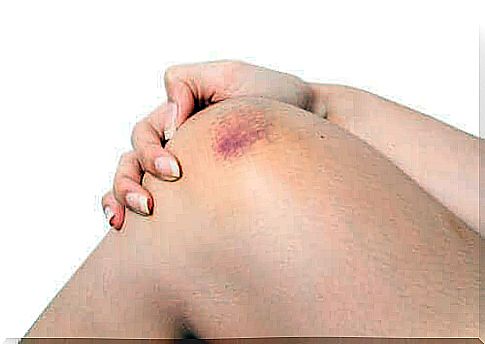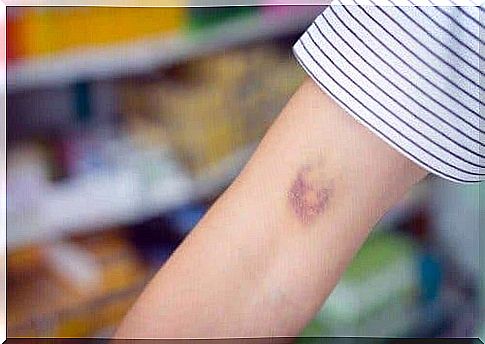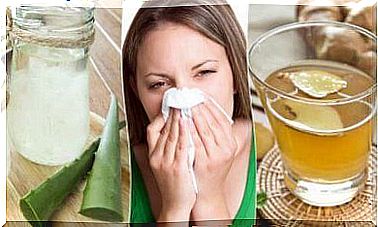Ecchymosis – What Exactly Is It?

Ecchymosis is one of the most common skin lesions. It is a basic symptom of many other diseases and ailments along with other dermatological symptoms.
It could be said that ecchymosis is a subcutaneous hematopoiesis as it does not involve wounds or other skin lesions on the surface of the skin above it. This accumulated blood is the result of broken blood vessels.
Extravasation of blood outside the blood vessel is called extravasation. Ecchymosis comes from extravasation under intact skin. That is, there are broken, open blood vessels that result from either a shock, an infection that destroys the blood vessels from the inside, or ruptured muscles in the area.
Ecchymosis is a skin lesion, but it does not only affect the outer skin. This type of damage can also develop under the mucosa, for example in the area inside the oral cavity.
Causes of ecchymosis
Ecchymosis can be caused by several things. The end result is rupture of blood vessels and extravasation of blood into the subcutaneous space. It can be caused by:
- Physical trauma, such as a blow to the skin that does not cause the skin to break. In other words, it is caused by a blunt object. Remember that ecchymosis is only present when there are no superficial wounds on the skin.
- Ecchymosis is common in athletes. Sometimes it is due to physical trauma and sometimes again due to overwork in training that can damage muscles.
- Vitamin K is an essential substance for blood clotting. Deficiency of this vitamin contributes to the emergence of ecchymoses.
- Certain infectious processes can weaken blood vessels and break them from the inside, without breaking down the skin. Sometimes ecchymoses are the first symptom of an infection. They can appear even before the fever rises.
- As with vitamin K deficiency, people with blood clotting disorders such as von Willebrand’s disease are prone to ecchymoses. In addition, a coagulation disorder may be a secondary symptom of another disease, such as cancer.
- Some diseases require the use of blood thinners. The side effect of their use is the formation of ecchymoses spontaneously or as a result of small lesions that would not normally break down blood vessels.

How is ecchymosis formed
Ecchymosis, as described above, is the accumulation of blood in the subcutaneous space under intact skin. The process is self-limiting, and after a certain time, the blood is absorbed back into the body.
During reabsorption, which can take weeks, the skin color of the damaged area changes. The color changes reveal the stage of the healing process of ecchymosis.
For example, blood is red when it is inside a blood vessel. As it leaves the vein and drains into the subcutaneous space, it is taken over by defense cells known as macrophages. Within macrophages, blood hemoglobin loses the oxygen it carries and becomes darker in color.
The dark red color of oxygen-free hemoglobin appears purple when viewed from the outside of the body. This is the typical color from which ecchymosis can be identified, i.e. the color of the bruise.
Within days, hemoglobin is converted into several different pigments due to its degradation. Purple is followed by a green color as hemoglobin is converted to biliverdin.
Days later, biliverdin is converted to bilirubin. At this point, the skin color changes from green to yellow. Bilirubin then turns into hemosiderin, which looks outwardly pale brown.
In the last stage of ecchymosis, blood residues are completely absorbed. Once again, macrophages intervene in the process and digest all the remaining hemosiderin. At this point, the skin returns to its normal color.

Classification of ecchymosis
The terms ecchymosis, hematoma, bruise, and petechiae are often used interchangeably, but they do not mean the same thing. In dermatology, each of them has its own characteristics.
Strictly speaking, a hematoma is an ecchymosis that causes the surface of the skin to rise. That is, if the skin surface of the damaged area does not rise, it is not a hematoma.
Rather, petechiae is defined by the size of the ecchymosis. Damage up to two millimeters is petechiae, but for damage larger than this, there is talk of ecchymoses.
Keep in mind that ecchymosis is usually transient and is mainly related to physical trauma. Seek medical attention if you constantly have bruises that you do not know the cause.









